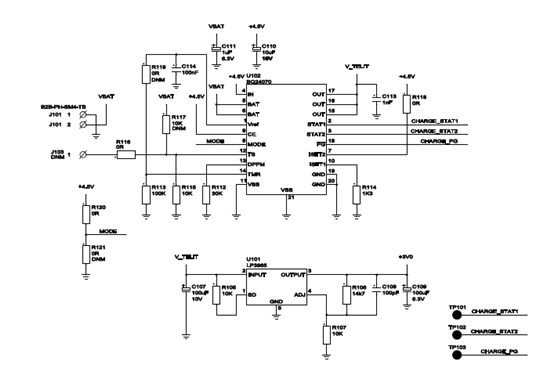Hello,
We are using the BQ24070 to charge a 3500mAh Li-ion battery and to drive a board with uC, GPS and GSM modules.
1. When only battery is connected, what is supposed to happen on the output when battery gets really low? If Q2 = BATT in this condition, it means that the output always shall equal the battery voltage? But when measuring the battery (UN3480), it is 3.84V, but the output of the BQ24070 is sometimes 1.61V. Is this a designed way to protect the battery for avoiding deep discharge? The thing is that when inserting supply voltage at that state, the voltage ramp for the components will be from 1.6V and not from 0 volts. Can you explain this behaviour? Note that if taking out the battery and replacing the connector again, the OUT pin is correct again, i.e. 3.84V / battery voltage. EDIT: when reading other posts this really sonds like the short-circuit detection state".
2.The peak current of the GSM module is 2A. We measure drops of 0.2V from the output (from 4.4V to 4.2V) when the GSM is active sending. Is this normal? Can I redesign to avoid this?


